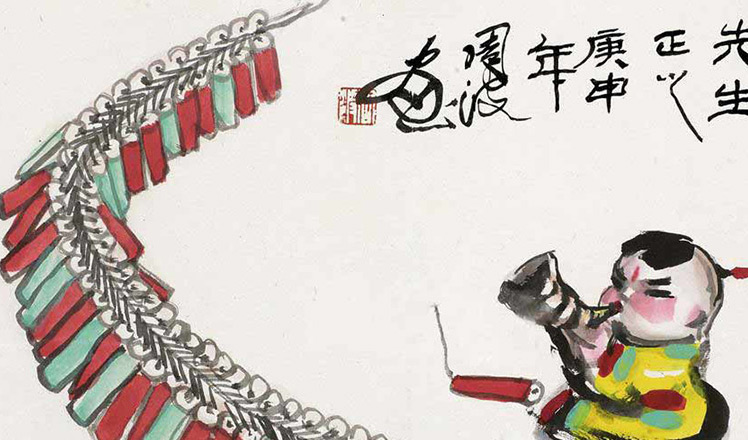Demand grows for supply-side focus
Updated: 2016-01-20 08:15
By Zheng Yangpeng(China Daily)
|
||||||||
Five objectives
The communique released after the Central Economic Work Conference in December provided a few clues about what the leadership means when it talks about supply-side reform, and five policy objectives outlined in the statement provide some answers.
The first was a commitment to shed the persistent industrial sector overcapacity that has plagued China for years, and in turn dragged the Producer Price Index down for 46 straight months (PPI slumped 5.9 percent in December from a year earlier).
However, the real process of shedding overcapacity has not really started in China because of persistent concerns among local governments. They worry that closing factories under their jurisdictions would result in losses in tax revenue, a slump in economic indicators and massive layoffs - many unprofitable State-owned enterprises are the single largest employers locally - and subsequently social unrest. As Wang Shuo, an economist at Caixin Media, put it, "keeping the zombie firms alive, while economically detrimental for the whole economy, makes every sense for rational local officials".
The conference urged the creation of conditions for "market-oriented bankruptcy procedure". It asked local governments to choose a "merger and acquisitions" approach while avoiding the "bankruptcy and liquidation" approach that inflicts more pain. Policies should be put in place to ensure disposal of bad assets and the protection of people who lose their jobs.
The second commitment was to reduce business costs. Although tax cuts will be an integral part of the program, experts cautioned that substantial tax cuts would be unlikely. Instead, the government is looking at reducing companies' operating costs, which include not only taxes, but also administrative fees, employees' social security payments and the cost of obtaining administrative approvals.
Economists say there is huge room to cut the obligation on businesses to pay employees' social security contributions, because employers are burdened with one of the highest social security obligations in the world. Total payment, including pension fund, medicare insurance and housing provident fund, amounts to 44.1 percent of an employee's monthly salary. The conference called for these obligations to be "streamlined".
Objective number three was to eradicate excessive inventory in the property sector. Official data show that, at the end of last year, there were 452 mill-ion square meters of inventory in the property sector, but that represented the tip of the iceberg. According to the Chinese Academy of Social Sciences, there are 3.57 billion sq m of unfinished homes, and the total inventory may take 6.5 years to eliminate. The huge inventory has damped developers' willingness to pour money into the construction of more homes, thus dragging on the overall economy: a quarter of China's GDP is related to the real estate industry.
- A glimpse of Spring Rush: little migrant birds on the way home
- Policy puts focus on genuine artistic students
- Police unravel market where babies are bought, sold as commodities
- More older pregnant women expected
- Netizen backlash 'ugly' Spring Festival Gala mascot
- China builds Mongolian language corpus
- 2 Chinese nationals killed, 1 injured in suspected bomb attack in Laos
- New York, Washington clean up after fatal blizzard
- 'Plane wreckage' found in Thailand fuels talk of missing Malaysian jet
- Washington shuts down govt, NY rebounds after blizzard
- 7 policemen, 3 civilians killed in Egypt's Giza blast
- Former US Marine held in Iran arrives home after swap

 Drone makers see soaring growth but dark clouds circle industry
Drone makers see soaring growth but dark clouds circle industry China's Zhang reaches Australian Open quarterfinals
China's Zhang reaches Australian Open quarterfinals
 Spring Festival in the eyes of Chinese painters
Spring Festival in the eyes of Chinese painters
 Cold snap brings joy and beauty to south China
Cold snap brings joy and beauty to south China
 The making of China Daily's Tibetan-style English font
The making of China Daily's Tibetan-style English font
 First trains of Spring Festival travel depart around China
First trains of Spring Festival travel depart around China
 Dough figurines of Monkey King welcome the New Year
Dough figurines of Monkey King welcome the New Year
 Ning Zetao, Liu Hong named China's athletes of the year
Ning Zetao, Liu Hong named China's athletes of the year
Most Viewed
Editor's Picks

|

|

|

|

|

|
Today's Top News
National Art Museum showing 400 puppets in new exhibition
Finest Chinese porcelains expected to fetch over $28 million
Monkey portraits by Chinese ink painting masters
Beijing's movie fans in for new experience
Obama to deliver final State of the Union speech
Shooting rampage at US social services agency leaves 14 dead
Chinese bargain hunters are changing the retail game
Chinese president arrives in Turkey for G20 summit
US Weekly

|

|







